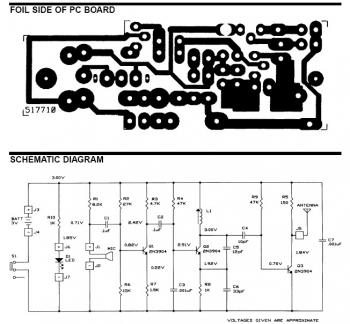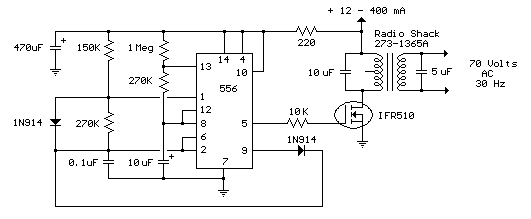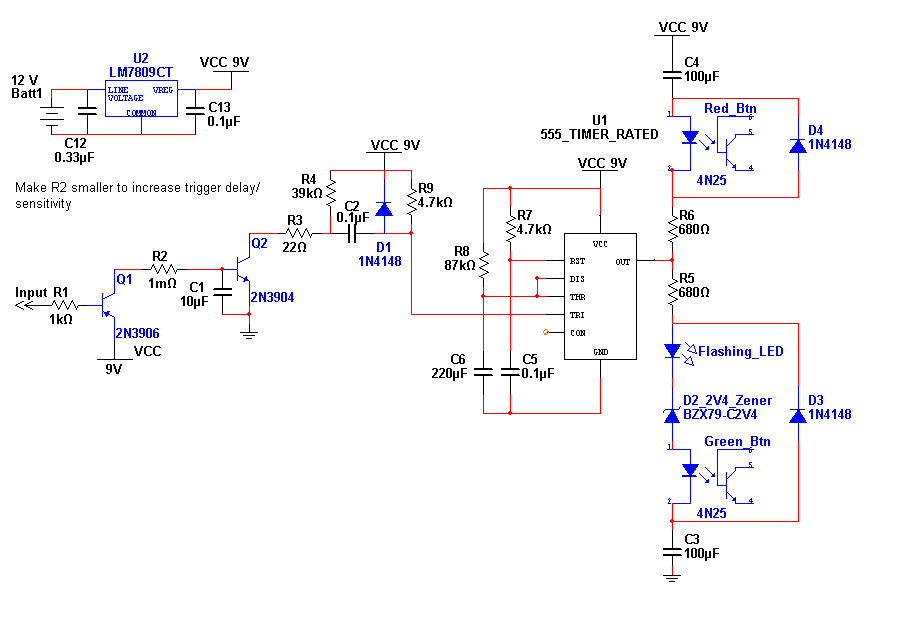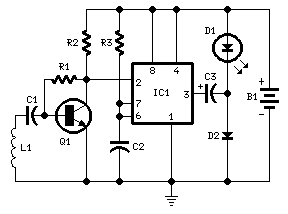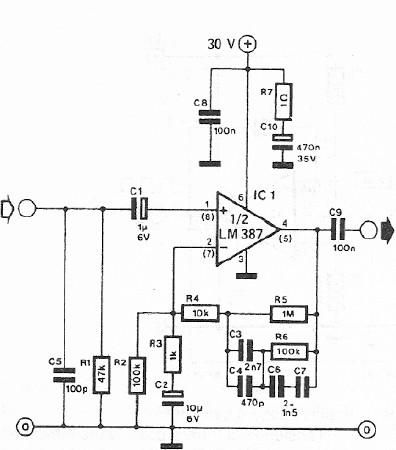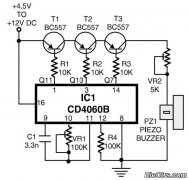
TAXI PHONE
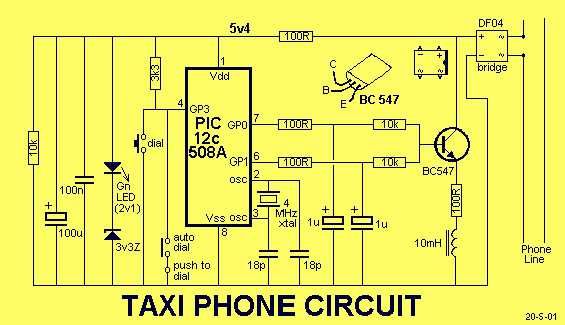
This project is a dedicated device. It dials a single phone number when the handset is lifted. There are two different modes of operation. A slide-switch on the PC board allows the project to operate in automatic or manual mode. If the switch is in "auto dial" mode, a pre-programmed phone number is automatically dialed when the phone is lifted. If the switch is in "push to dial," the project dials the number when the phone is lifted and the "push to dial" button is pressed. This allows the phone to be used as a normal phone.
The described project involves the design of a telephone dialing device that incorporates two operational modes: automatic dialing and manual dialing. The core functionality is based on detecting the lifting of the handset, which serves as a trigger for the dialing process.
In the automatic mode, the device utilizes a microcontroller or dedicated dialing IC that is programmed with a specific phone number. When the handset is lifted, a switch closure is detected, signaling the microcontroller to initiate the dialing sequence. This sequence typically involves generating the appropriate dual-tone multi-frequency (DTMF) signals corresponding to the digits of the pre-programmed number. The DTMF signals are then transmitted through the phone line to establish a connection with the desired recipient.
In the manual mode, the operation is slightly modified. The same handset-lifting action triggers the device, but it requires the user to press a designated "push to dial" button to initiate the dialing process. This feature allows the user to utilize the phone in a traditional manner, providing flexibility for situations where the automatic dialing might not be preferred.
The circuit design includes a slide switch that is integrated into the printed circuit board (PCB). This switch allows the user to easily toggle between the two modes of operation. Additional components such as resistors, capacitors, and possibly a relay may be included to manage the signal conditioning and ensure reliable operation during the dialing process.
Power supply considerations are also critical, as the device must operate efficiently within the voltage and current specifications of the phone line. The circuit should be designed to minimize any power draw when idle, while still providing enough power to drive the dialing function when activated.
Overall, this project exemplifies a practical application of electronics in telecommunications, offering a straightforward solution for automatic and manual dialing capabilities in a single device.This project is a dedicated device. It dials a single phone number when the handset is lifted. There are two different modes of operation.. A slide-switch on the PC board allows the project to operate in automatic or manual mode. If the switch is in "auto dial" mode, a pre-programmed phone number is AUTOMATICALLY dialled when the phone is lifted. If the switch is in "push to dial," the project dials the number when the phone is lifted and "push to dial" button is pressed.
This allows the phone to be used as a normal phone. 🔗 External reference
The described project involves the design of a telephone dialing device that incorporates two operational modes: automatic dialing and manual dialing. The core functionality is based on detecting the lifting of the handset, which serves as a trigger for the dialing process.
In the automatic mode, the device utilizes a microcontroller or dedicated dialing IC that is programmed with a specific phone number. When the handset is lifted, a switch closure is detected, signaling the microcontroller to initiate the dialing sequence. This sequence typically involves generating the appropriate dual-tone multi-frequency (DTMF) signals corresponding to the digits of the pre-programmed number. The DTMF signals are then transmitted through the phone line to establish a connection with the desired recipient.
In the manual mode, the operation is slightly modified. The same handset-lifting action triggers the device, but it requires the user to press a designated "push to dial" button to initiate the dialing process. This feature allows the user to utilize the phone in a traditional manner, providing flexibility for situations where the automatic dialing might not be preferred.
The circuit design includes a slide switch that is integrated into the printed circuit board (PCB). This switch allows the user to easily toggle between the two modes of operation. Additional components such as resistors, capacitors, and possibly a relay may be included to manage the signal conditioning and ensure reliable operation during the dialing process.
Power supply considerations are also critical, as the device must operate efficiently within the voltage and current specifications of the phone line. The circuit should be designed to minimize any power draw when idle, while still providing enough power to drive the dialing function when activated.
Overall, this project exemplifies a practical application of electronics in telecommunications, offering a straightforward solution for automatic and manual dialing capabilities in a single device.This project is a dedicated device. It dials a single phone number when the handset is lifted. There are two different modes of operation.. A slide-switch on the PC board allows the project to operate in automatic or manual mode. If the switch is in "auto dial" mode, a pre-programmed phone number is AUTOMATICALLY dialled when the phone is lifted. If the switch is in "push to dial," the project dials the number when the phone is lifted and "push to dial" button is pressed.
This allows the phone to be used as a normal phone. 🔗 External reference
